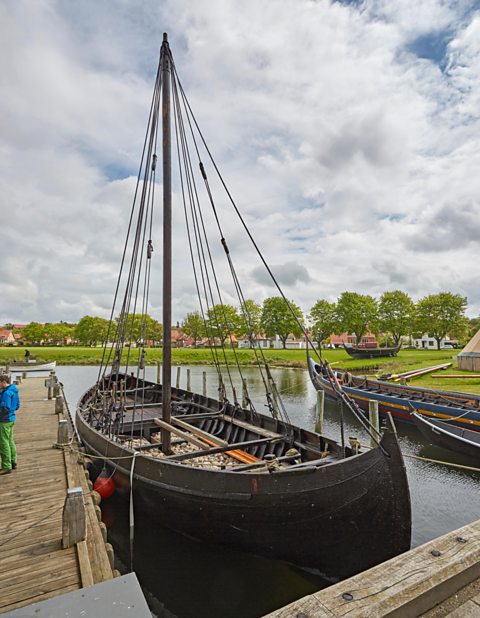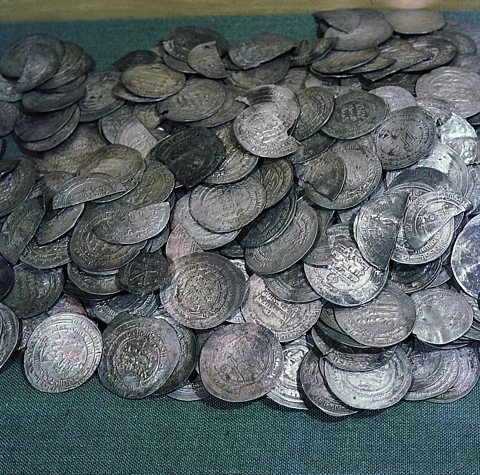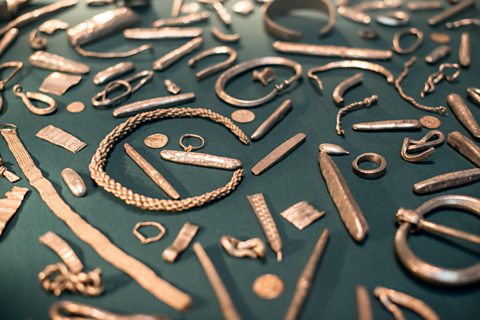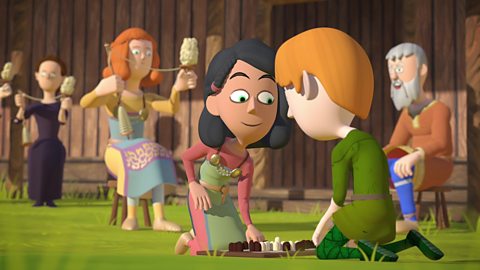The Vikings travelled far and wide and where ever they went they bought and sold goods. But where did they trade and what did they buy?
The Vikings traded items from the world over using linen and silver to barter.

Buying and selling
As well as being famous for raiding and fighting, the Vikings were also excellent traders.
The Vikings were expert sailors and they used these skills to travel far and wide. They crossed seas and sailed up rivers and, wherever they went, the Vikings traded with the people they met.
The Vikings traded all over Europe and as far east as Central Asia.
Traders made long journeys overland through Russia, reaching as far south as Constantinople, known today as Istanbul in modern-day Turkey. Some merchants travelled further east to Baghdad in Iraq.
While large, narrow longboats were used for raiding, the Vikings used smaller, broader boats called knorrs for trading. These boats could hold more cargo and they were also better suited to navigating inland rivers.


What did the Vikings trade?
The Vikings bought goods and materials such as silver, silk, spices, wine, jewellery, glass and pottery.
The things they bought were usually luxury goods or materials that they couldn't find easily in their own lands.
In return, they sold items like honey, tin, wheat, wool, wood, iron, fur, leather, fish and walrus ivory. Everywhere they went, the Vikings bought and sold slaves too.
Viking traders carried a set of folding scales which they used to weigh coins to make sure they got a fair deal.


How do we know what the Vikings bought and sold?
While there are accounts from all over Europe of people describing trading with Vikings, some of the best examples of Viking trade have been dug out of the ground.
When wealthy Vikings died they would usually be buried with their most prized possessions.
Warriors would be buried with their sword or axe but often they would also have their jewellery with them, too.
By examining the style of jewellery, or the materials it was made from, it is possible to find out where the Vikings got it from.
Another good source of information comes from Viking hoards. These are basically places where Vikings buried their treasure. When hoards are found, experts can learn a lot about who the Vikings of that area where in contact with and what they bought and sold.

More on Vikings
Find out more by working through a topic
- count9 of 9

- count1 of 9

- count2 of 9

- count3 of 9
